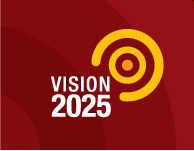|
Church growth and God's
word in the heart language
What role/effect does scripture in local languages have in church growth?
Good question! It’s one that is central to Vision 2025.
We present below what has happened in terms of church growth in a number of people groups where God’s word has become available in the local language. This is only a small sample. Some are stories, some present numbers. All are enlightening. We hope that the Church world-wide, as it seeks to fulfil the Great Commission, will see the importance of using God’s word in a language that people can understand and that we can serve in equipping those who get involved in this vital work.
Frafra people group, Ghana
This people group numbers about 500,000. The Bible in various trade languages has used since the early 1900’s. Depending on direction that missionaries came from, languages such as English, Mosi, Twi, Yoruba and Mampruli were used. It was estimated in the early 1970s that only 2000 believers existed out of a population then of 400,000.
Bible portions in Farefare were made available from 1976 and the New Testament was published in 1986. In 2001 it was estimated that 270,000 Frafras have become Christians.
Why the explosion in numbers? “Through the Farefare New Testament, Christianity was expressed in Frafra terms and they have embraced it” summarise our facilitators there.
The Frafra people themselves comment “In the early days when Christianity came to the group, we would not accept it because we were well rooted in our traditional culture. We resisted the gospel to an extent that we would not release land for the establishment of those who brought the gospel, in fear that the white man's god would drive away our ancestral spirits guiding us. Those who accepted the gospel were counted cursed and useless. We would not accept anything said about God or salvation said to us in or from a different language and culture. This changed when a literacy and translation programme was started. In the course of the New Testament translation to its publication, many read portions of the Bible in their own language and understood it in their own culture and gave their lives to Christ. The translation also opened the door for native zealous Christians to travel far and preach the gospel in the Farefare language rather than waiting for others to come and preach.”
Me’en people group, Ethopia
This people group numbers about 100,000. The Bible in the national language, Amharic, was introduced into the area in the 1960s. Only 2 believers were known before the scripture portions were published in 1993 in Me’en. In 2001 it was estimated there were 5000 believers. Our contact states “Evangelisation was begun in the mother tongue in 1991. The church planting team and translation team worked closely together and there has been a very evident move of the Holy Spirit among the people”.
Kasena people group, Ghana
This people group numbers about 250,000. The local language is Kasem. First reached with the Gospel in English in the 1920’s, only 4-6 churches existed up to 1980 and those were only in the main towns. God’s word in Kasem started to become available around that time and now over 50 churches exist throughout the area. Several Kasena churches also exist outside the homeland for Kasena who have migrated south for farming and employment.
Comments received regarding the factors for this growth, “Positive acceptance of translated scriptures among churches and other groups. Ghana Evangelism Committee used Kasem materials for literacy & evangelism among migrants working in south. Commitment of local church leaders and missionaries in the area to teaching and preaching in Kasem, including establishing a rural Bible school. The significant growth has been in the village areas which were previously untouched through English. Impact on the established town churches has been slower but still significant.”
The above figures relate to the situation in Ghana. Similar growth has occurred in Burkina Faso where a Kasem version became available a few years later.
Highland Chatino people group, Mexico
This people group numbers about 20,000 and are monolingual. Only 3-4 believers were known before work started on translation in the 1980’s. These had been converted outside the area. The New Testament was completed in 1993 and in 2001, 500 believers existed. Our facilitators comment “Where the church is growing soundly, the leaders have studied the scriptures and have realised needs of their own people. Being able to read Chatino easily is another factor to church growth. However resistance has been encountered due to spiritual warfare and aggressive but shallow evangelism by locals (often in Spanish) and consequent negative reaction to Chatino scriptures.”
Jur Modo people group, Sudan
This people group numbers about 16,000. When work was started on translation in the 1980’s, there were Christians and churches in some Jur villages, but mostly their faith was very shallow. Translators were evacuated at the end of 1984 but copies of the translated Mark's Gospel and a few photocopies of John's Gospel were left behind.
For several years, little or no news was heard although translation work continued outside the country. In 1991 news came that one pastor had just baptised over 1,000 adults in a part of the Jur area where there had been no churches previously.
It turned out that the Christians had gone out preaching to all the unevangelised villages, using the little bits of scripture they had in their language. Large numbers had been converted, witch-doctors had burned their charms, and now there is hardly a Jur village without a church.
Back to basics
In a study¹ performed in 1974, covering 15 people groups in Mexico and the Phillipines, the findings were as follows:
- People respond to the Gospel to the degree they believe it is relevant to their personal lives. Most converts had become convinced through personal witness by translators and others, but in there is no reason why good preaching or Bible studies could not accomplish the same thing. The relevant question then, is how does the truth have to be presented to appear relevant to the hearer. Clearly, one part of the answer is that it must deal with his/her personal concerns.
- The Gospel must be understood before one can respond to it. Christianity is profoundly an inner relationship with God. A relationship in which the meaning of Christian teaching must be grasped or there is nothing real happening. Unfortunately there is ample data to show that Scriptures in another language are frequently and usually, misunderstood in significant and damaging ways.
- This does not mean that people will only convert to Christianity and come to church if they understand the faith, however. They may respond at a very superficial level, come to church, even be active in passing their "faith" to others, but do they really have much of a relationship to God? An example of this from Papua New Guinea was that in one Highlands people group, the entire population of several villages "converted" and became active church attendees for several years, then announced "We have paid God back now. We will now quit coming to church and return to appeasing our ancestors." That was the end of their church attendance.
- The translated Word is a part of good church growth/planting strategy, not a substitute for it.
¹”The Bible Translation Strategy" Wayne Dye 1979
Last words……
As the above has shown, God is indeed doing something amazing among the peoples of the earth in these days. All the glory must go to Him. Let us remember that, after all, the best church planter and nurturer is the Holy Spirit.
|


